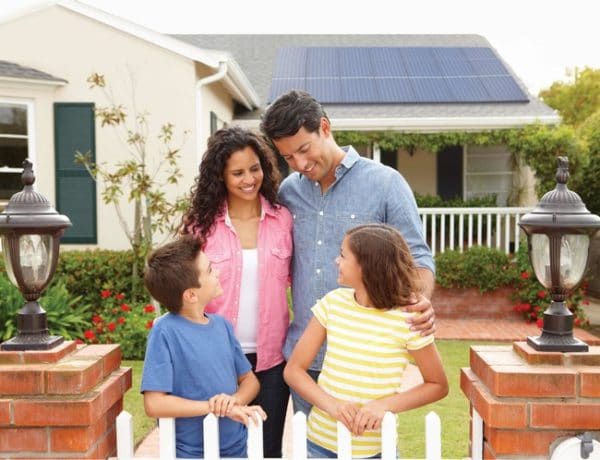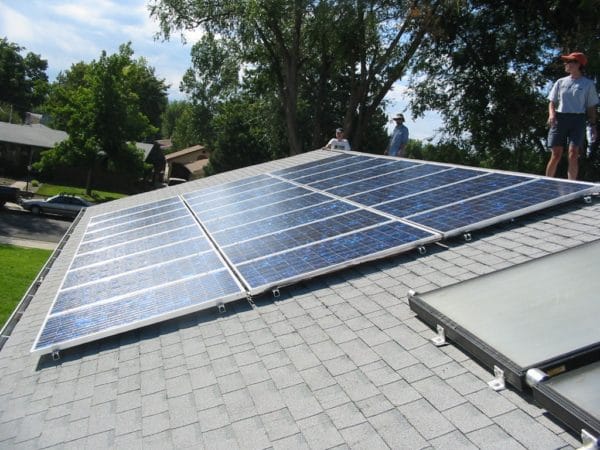If you’ve been following along with pv magazine USA’s Solar 101 series, you should have a strong handle on how to pick your panels, find a contractor, and determine how much electricity your home might generate.
All this technical knowledge is useful, but we’re still left with a nagging question: Exactly how much solar power should I install?
The best answer is often the simple one. Review your bills and ask, “How much electricity do I actually use?” Your solar contractor will use this technique to establish a baseline “just right” size for your solar power project.
Matching your panel production to your household’s use might seem like a pretty obvious answer, since offsetting electricity usage is typically the goal of a residential solar system purchase.
But there are several good reasons to choose a larger system, or even a smaller one!
This solar power plant is too big!
There are a couple of good reasons to choose a solar system that appears undersized in comparison to your estimated electricity usage.
The most obvious reason is that your roof may not be big enough for your solar array to fully cover a home’s electrical needs. If that’s the case, then the decision is already made and you can move on.
A second reason to go smaller is local net metering law.

Image: Sullivan Solar
In some places, full credit is given for daytime-generated, net-metered solar electricity. That means that all the electricity exported to the power grid on a sunny spring day is available for heating on a cold winter night. When the electrical grid works as a “virtual battery,” electricity requirements can often be met with fewer panels.
However, plenty of other places, like Utah, have very low net metering credits. In a situation where net metering credits are low, it can sometimes make economic sense to size your system small enough so that it is not exporting to the grid.
Economics, of course, does not rule everyone’s decision.
Another reason to build a smaller system is that a home might become much more energy efficient in the future. If your house needs more insulation, new windows, LED lights, smart thermostats, or other efficiency upgrades, then this author recommends completing those upgrades first.
The final reason is, of course, money. Solar can have some pretty high upfront costs. If the return on investment isn’t high enough, or if the larger cash outlay just doesn’t make sense, then going a bit smaller might be the best option.
This solar power plant is too small!
On the other hand, there are times when you might want to intentionally build a solar system larger than your current electricity bill.
The most common reason is the expectation that household electricity demand will increase. This is most common among consumers who wish to buy an electric car, or switch from a fossil-powered HVAC system to more efficient electric heat pumps.
Roughly speaking, if the average electric car gets three miles per kilowatt-hour of electricity, and drives an average of 12,000 miles per year, that car will add about 4,000 kWh to an electricity bill. The exact number of solar panels needed to cover that additional use varies by region and roof angle.
The National Renewable Energy Laboratory’s PVWatt’s solar generation calculator is among the best free tools to estimate your project’s yearly output before you commit.

Image: NREL/Pete Beverly
Another common upgrade, a heat pump, varies depending on how much it is used and where you live. For instance, a recent Vermont heat pump study of well insulated northern homes estimates that cold-climate heat pumps use on average 2,085 kWh per year for heating and 146 kWh per year for cooling. Obviously, in places like Florida, Texas, and other hot southern climates, yearly cooling electricity usage is significantly greater.
Roughly speaking, in order to generate 2,000 kWh (for a heat pump) or 4,000 kWh (for an electric vehicle) in a year, you’ll need an additional 1,500W or 3,500W of solar panels, respectively.
An exception for every rule
Those of you in hot climates will be pleased to learn that installing solar panels on a roof adds an additional layer of insulation to your attic by preventing the sun’s rays from heating your roof in the first place, as well as absorbing 20% of the sunlight and turning it into electricity instead of allowing it heat your home.
These additional tools can reduce cooling loads and make it easier to meet your home’s electrical needs with fewer panels, or less expensive (and usually less efficient) panels.
In some places, like Massachusetts, you can apply excess electricity generation credits to someone else’s electricity bill if they’re in the same power grid “load zone” or even sell those credit in a “community solar” type model. This is often referred to as remote net metering.
These considerations can make all the difference as you decide on how to size your rooftop solar array.
This content is protected by copyright and may not be reused. If you want to cooperate with us and would like to reuse some of our content, please contact: editors@pv-magazine.com.








If you have large trees, that block the sun part of the year, and you have net metering, going larger for the summer excess production can pay off in the winter when the trees block the sun and you have to use up all the credits. Check your balance one month before “true up” and use more or less electricity to get a zero net true up. It is easy to burn up the excess with electric space heaters and could save you on natural gas, fuel oil or LP gas that the heat from the space heaters replaces. The future is electric appliances. Some cities are already banning natural gas in new homes, so, plan ahead for that 25-year-plus solar investment.
Great article John, thanks! I’m quite surprised tho that you didn’t mention degradation as a reason for a larger system size. I usually tell my customers that they will have 6-7% less production in 10 years because of that. As a general rule, 110% offset is my typical goal.
Totally agree with this. I think I forgot about it, because I’m so used to doing it spot on to match commercial/industrial math – and these folks tend toward believing they’ll become more efficient over time.
Sure thing. Appreciate the reply and all the writing you do!